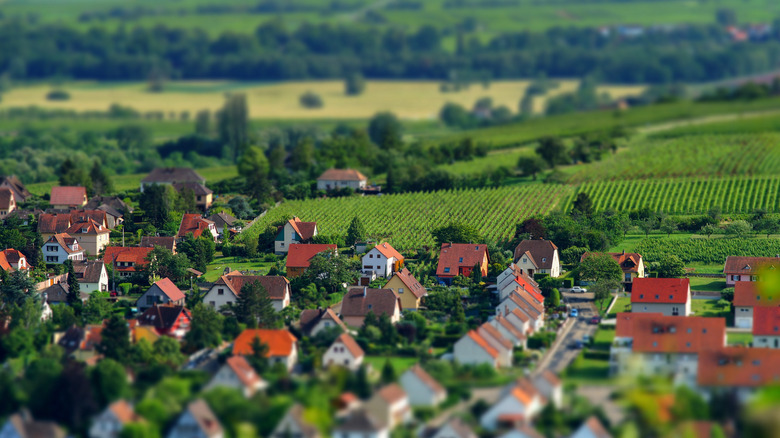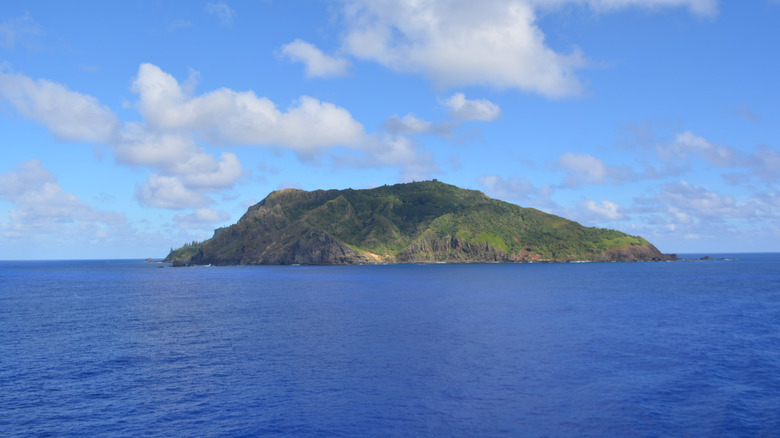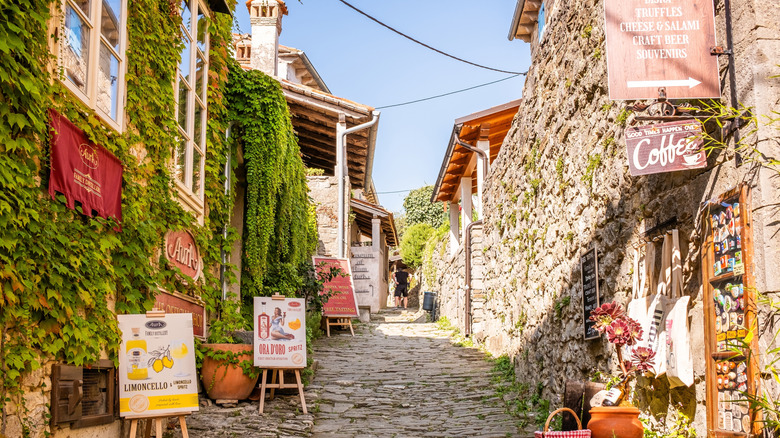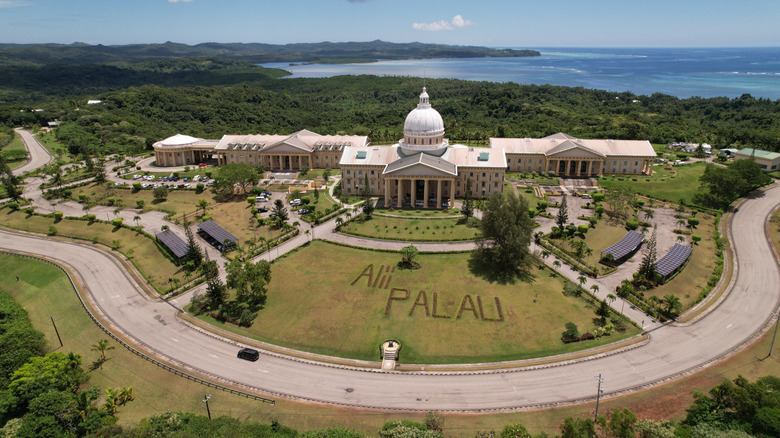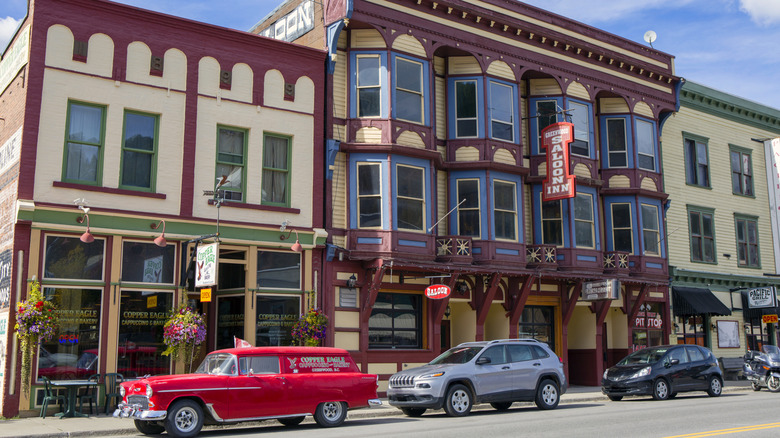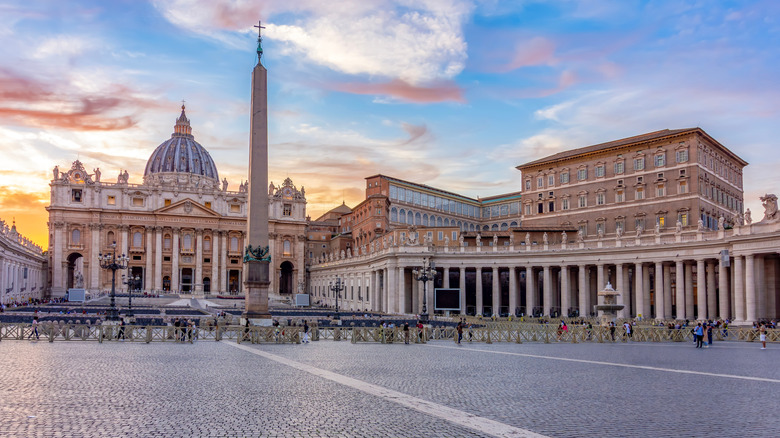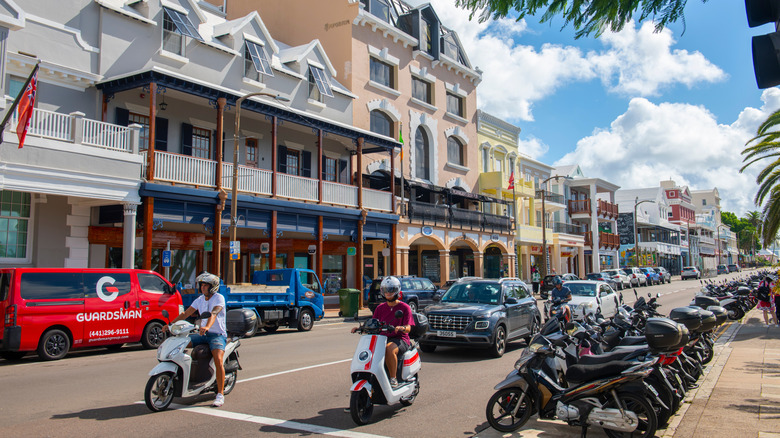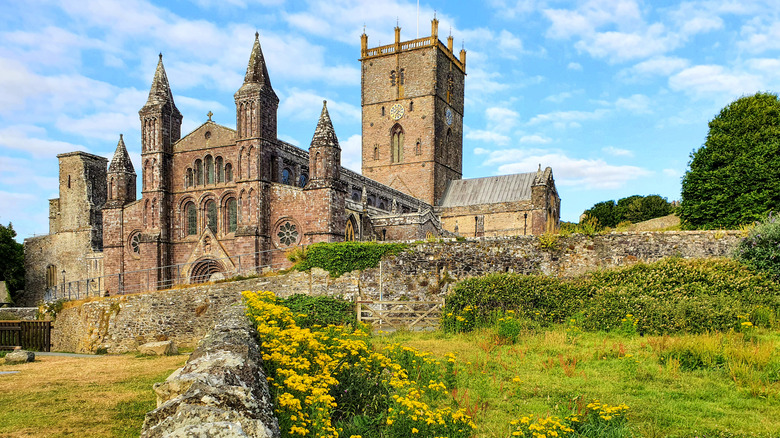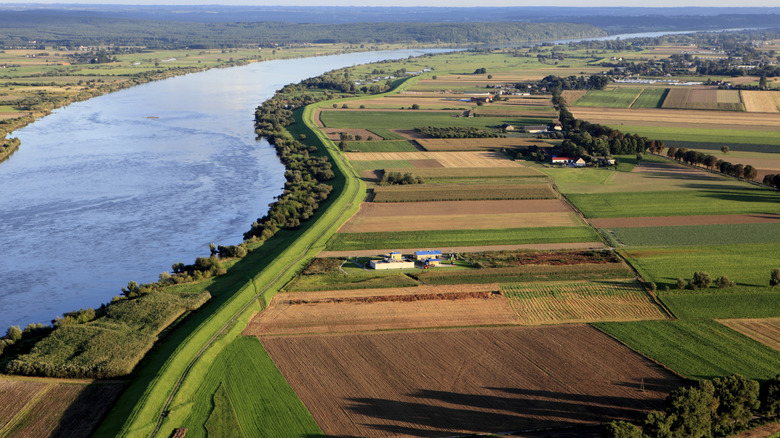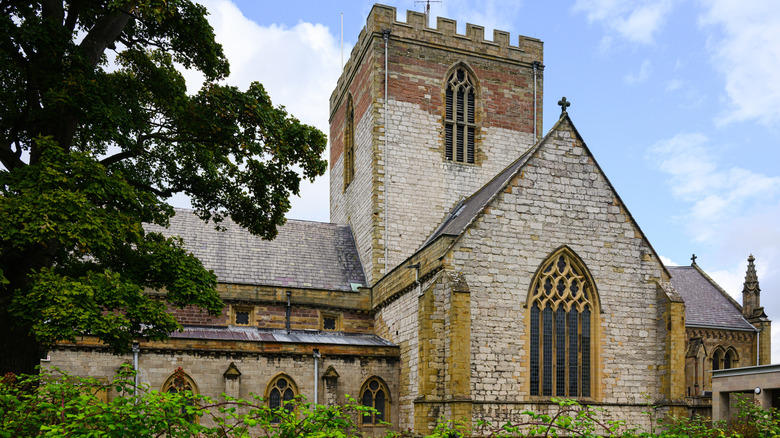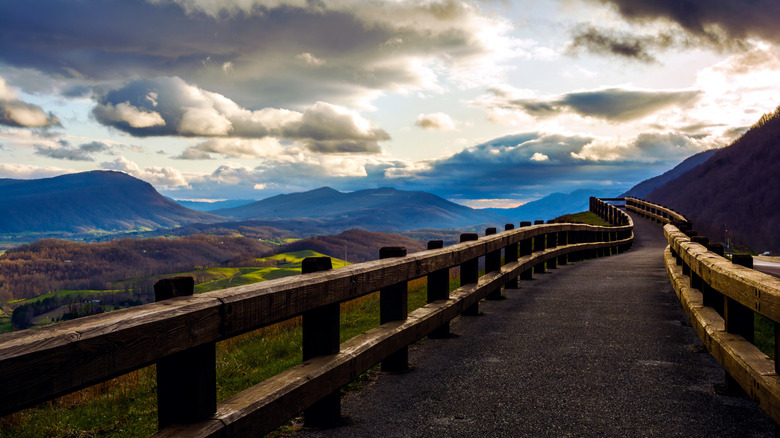The Smallest Cities In The World And How To Visit Them
The humble city break is one of those time-honored traditions that never fails to stir the imagination. Images of moonlight walks aside glittering rivers flash before the eyes, and thoughts turn to the endless possibilities of scintillating street food, fine restaurants, exotic climes, and last-minute make-up-trips.
Still, the actual definition of a city is harder to pin down than you might think. There is an expectation of size or at least some kind of hike in population density when compared to the surrounding area. In most cases, there is also an assumption of heightened regional importance. Because cities act as focal points. Cities mark the exit and arrival points of our most epic journeys; they serve as travel hubs, pit stops, and respite from the more arduous adventures to come.
And yet, some of them buck all these trends; some cities are happy to appear as a mere mark on a map. They are still places of importance, sure, but ones that eschew notions of gleaming metropolises, the decadence of urban sprawl, and the hectic pace of modern life. Across the globe lie cities that would not pass for a village in most places. Such tiny enclaves boast populations that struggle to make triple digits yet still manage to act as commercial hubs or seats of governments that offer charm and character that hits well above their weight. Some are situated well off the beaten track; others exist within cities of their own. More than a few are the result of locations that have fallen on challenging times or else been sidelined by the fickle winds of change. These are 10 of the smallest cities in the world and how to visit them.
Adamstown, Pitcairn Islands
The Pitcairn Islands group lies in the heart of the South Pacific, roughly 1,350 miles southeast of Tahiti. There are four islands in total: Henderson, Ducie, Oeno, and Pitcairn itself, which is the only one of the islands to have any inhabitants. 50 of them, to be precise.
The chain of islands forms part of a British Overseas territory — a political designation that is an obvious holdover from the days of Empire – and, as such, maintains strong constitutional, linguistic, and cultural ties with the U.K. Indeed, although islanders speak a Creole dialect, travelers visiting the island are usually greeted in perfectly understandable English.
The island's history is steeped in infamy thanks mostly to its connection to the mutiny on the HMS Bounty a scandal that rocked the British navy back in 1789. Unhappy with the way the ship was being run, Fletcher Christian, the First Officer of the Bounty, rebelled, setting his captain adrift in a row boat and then fled with 25 crewmembers, some natives, and the bulk of the supplies. After a failed attempt to establish an outpost in French Polynesia, they relocated to the Pitcairn islands. They stayed hidden from the world until 1808, when the descendants of the crew were discovered living on the island. Even today, all the residents on the island can trace their origins back to the original mutineers.
Getting to Pitcairn is an adventure in and of itself. You'll first have to fly to Mangareva, the largest of the Gambier islands in French Polynesia. From there, you can book a passage on the MV Silver supporter. The ship sails about once a week with a round trip taking approximately four days.
Hum, Croatia
Croatia is not the first place that springs to mind when one is considering a European vacation. A crescent-shaped country in the northwestern part of the Balkan peninsula, it is known for its mild summers, affordable beach holidays, scatterings of picturesque islands, and breathtaking ancient ruins. Its capital city – Zagreb – is also its largest, clocking in at just shy of three-quarters of a million people. Its smallest is the curiously named Hum; at last count, it had a population of just 52 people.
Hum is situated in the deeply forested and mountainous heart of Croatia, close to the Učka National Park and less than an hour's drive from the popular resort town of Opatija. The city boasts a single road — and two cobblestone alleys — and legend has it that this 11th-century once-hamlet was built from stone left over from towns that belonged to a race of giants. To say that the place is quaint would be to do it an injustice. It sits upon a vantage point overlooking the source of the Mirna River and is a mere 100 meters in length. There are just twenty buildings in total, including two churches and a castle. One of the churches – St Jerome – is almost as old as the city itself and dates to the 12th century; it features some stunningly well-preserved Romanesque frescoes that are worth the trip to Hum, all by themselves.
There's a museum – situated down the road to preserve the city's form factor – a bell tower to climb, and a sense of tranquillity that matches the cachet of visiting one of the world's smallest cities. It's also easy enough to find. Approaching from either side of the peninsula's Adriatic coast, you'll find that the area is well served by Croatia's well-maintained road network, which offers some of the most beautiful drives in all of Europe.
Ngerulmud, Palau
The Pacific Islands region is made up of 63.8 million square miles of mostly deserted ocean peppered with some 30,000 islands. Most of the islands are, of course, deserted and such is the case with Palau, an archipelago of some 340 coral and volcanic outcroppings just east of the Philippines that forms part of the beach paradise haven known as the Carolinas.
The entire nation boasts fewer than 20,000 residents and relies heavily on US aid, fishing, and tourism to keep its economy afloat. Around two thirds of the nation's population live in Koror City, which, until 2006, was considered to be its capital. That all changed shortly after the construction of the grand Neoclassical Palace of the Palau National Congress. The site selected for the new building was a scrap of land known as Ngerulmud; overnight, it became both the new capital city and the seat of government for this island despite the fact that only 203 people called the place home.
Palau is known for its tranquil lakes, stunning beaches, and magnificent coral reefs, and as such, is considered to be one of the top diving destinations in the world. But it is also home to some unique wildlife; over 70 species of orchids grace its shores. Tours of its many lakes are popular with tourists who can enjoy the experience from the comfort of its ubiquitous glass-bottomed boats. The waters are unsurprisingly pristine and are home to thousands of species of marine life, with special attention given to pods of dolphins that are regular visitors to the region.
Climate-wise, the island has an average temperature of around 80 degrees Fahrenheit, and, thankfully, getting there is relatively easy. Regular flights into the main island's airport take off from Taiwan, Australia, Hong Kong, and surrounding regions.
Greenwood, British Columbia, Canada
The zeitgeist surrounding British Columbia most often focuses on the comings and goings of its most prominent city, Vancouver. But with 364,764 sq. miles to explore, Canada's westernmost province has so much more to offer. There are underrated towns sporting some of the world's best beaches to visit, fishing, and nature hikes to enjoy, as well as some truly unique locations offering unique glimpses into the nation's past. Such is the case with Greenwood, a city located in the central part of the province and sporting a population of just 702 at last count.
The city sprung up in the late 1800s and quickly established itself as a thriving mining town. It was incorporated in 1897 and has retained its city status ever since, despite a dramatic downturn in the number of people calling it home. Tourism is the main industry these days, something fueled by the fact that Greenwood has retained all the charm of its historical origins. The landscape is dotted with over 60 heritage buildings, including old-school saloons, whitewashed churches, and the skeletal remains of its industrial past.
The surrounding region is also a delight. There's an impressive waterfall just four miles to the south, ski resorts to the east, and bodies of water — including the aptly named Jewel Lake — offering the chance to explore secluded creeks and forgotten ghost towns. The area is well served by local road networks – it's just eight miles north of the U.S border – and although it is not part of any rail network, Penticton Regional Airport is situated just 80 miles away and offers car rental services for those who want to enjoy the picturesque drive towards Canada's smallest city.
Vatican City
The Vatican City is all that remains of the once vast Italian holdings of the Catholic church. The Papal States were at one time a nation unto themselves, a strip of central Italy – that included Rome – that was ceded back to the Italian people in 1870. All that was left to the Holy See was a central complex comprising a square, an ancient basilica, and dozens of palaces, churches, galleries, and associated buildings.
The city remains an anomaly to this day. Still a nation in its own right, it's also its own capital, and with just 764 inhabitants, it is one of the second least populated centers of government in the world.
Getting there could not be easier; just fly to Rome and follow the signs. You can walk inside, free of charge, but some of the attractions – the Sistine Chapel – for example, have an entrance fee, and long lines are the norm rather than the exception. It's worth the wait, though, as the Vatican's collection of art, architecture, and history is the equal of anything else you are likely to experience, no matter how far you travel.
Hamilton, Bermuda
Bermuda is one of those locations that needs little in the way of introduction. It is a place of moonlit beaches, crystal waters littered with mysterious shipwrecks, hidden coves, and untold adventures just waiting to happen. Executives flock there to enjoy a year-long work-from-home vacation like no other. It offers superb diving opportunities, world-class surf, incredible dining opportunities, and breathtaking hikes. It is, in short, something of an earthly paradise and a sparsely populated one at that.
Situated some 650 miles off the East coast of the United States, this self-governing British overseas territory is comprised of seven main islands and dozens of smaller islets and rocks. There are just over 60,000 inhabitants, and its capital joins others on this list when it comes to sparsely populated cities. Hamilton boasts a headcount of just 1100 residents.
Of course, the city is still the beating heart of this island nation. Tourism is the name of the game when it comes to Bermuda's economy and every day, some 14,000 residents commute to the capital to staff the hotels, bars, and restaurants that cater to visitor's every need.
Traveling to Bermuda is a simple matter of booking a flight, although arriving by sea via a cruise comes highly recommended. Once there, settling into the slower pace of life on the island becomes second nature in a deliciously organic way. Indeed, Bermuda is often considered the most beloved of all the Caribbean islands and can point to more than one tourism award to back that somewhat lofty claim.
St. Davids, Wales
The United Kingdom is an amalgamation of several different countries, three of which are located on the island of Great Britain and one other — Northern Ireland — which shares a border with the Irish Republic. Wales is the least populous of the three main island nations, with just over three million people; it is a land of rolling hills, rugged coastlines, ancient poems, rugby, and myriads of tiny out-of-the-way villages and hamlets.
St David's is certainly off the beaten track, and, in terms of population and size, it's most assuredly tiny. But it's not a village; it's a city despite sporting a population of just 1,348. Its elevated status stems from the 12th-century cathedral that sits at the heart of the community. The presence of a cathedral is often associated with city status in the UK by tradition, but such is not the case with St Davids. Indeed, for most of its history, St Davids was thought of as little more than a town with an oversized church. That all changed in 1995 when Queen Elizabeth II elevated it to full city status.
Still, the city remains something of a backwater located as it is on a western peninsula of Wales itself. It's a seven-hour train ride from London –or just over four hours by car – although those preferring a gentler pace can take the delightfully named Puffin Shuttle bus down the coast instead. There's certainly a lot to see and do when you get there. The Cathedral is, of course, the main draw — the carved ceiling above the nave is a true wonder of the world – but there are other delights to discover. There are the ruins of the old Bishop's palace, boat trips to the offshore island, nearby castles to explore, and, of course, the opportunity to immerse yourself in the rich history of Welsh culture and language.
Opatowiec, Poland
Central Europe is a densely populated place, but the further East you travel the less true that seems to become. Poland is a country of close to 40 million people, with its two largest cities — Warsaw and Krakow — boating populations of 1.79 million and 780,000, respectively. Situated some 84 miles east of Krakow — a place famed for its world-class Christmas market – lies Opatowiec, another locale close to the banks of the mighty Vistula but one comprised of just 3,090 residents. The settlement became a city in 1271, and not long after, a Dominican abbey was constructed on the site to help cement its newfound status.
Still, little remains of such structures now. The city was destroyed on multiple occasions as the tides of history and the ambitions of its larger neighbors tore at Poland's heart with depressing regularity. The Wehrmacht burned the city to the ground in 1939 as they marched East, but the tenacious spirit of the Polish people prevailed as it so often had before. They rebuilt.
Today, Opatowiec most closely resembles a quiet village replete with stores, schools, an old church, and clusters of residential dwellings – a smattering of old ruins is all that is left of its ancient past. Little takes place in way of tourism, and its chief claim to fame stems from the very reason it made this list in the first place.
St. Asaph, Wales
Parts of Wales are still – even to this day – considered to be wild and untamed corners of the UK that beg exploration. Its south coast is dominated by its largest cities, Swansea, Cardiff, and Newport, while the North is reluctant to abandon the urban sprawl of its more populous neighbor, England. St. Asaph sits at the extreme end of this Northern trend of inner-city stretch. Closer to Liverpool than it is the Welsh capital of Cardiff, it's tempting to think that this tiny locale of just 3,485 people isn't the best-equipped place to offer an authentic Welsh experience. But think again.
The city has long been an ecclesiastic hub; there has been some sort of church or place of worship here for close to 1500 years. Today, St. Asaph still sports a magnificent 13th-century cathedral, the presence of which confers city status on what you'd otherwise struggle to describe as a small town.
Renting a shepherd's hut – which is not as grim as it sounds – is an excellent way to enjoy the local area. There are medieval castles to discover, convenient rail links to the must-see city of Liverpool, golfing, hiking, and the opportunity to get back in touch with nature, that is something of a Welsh staple.
Norton, Virginia, USA
North America might have been left out of this list altogether were it not for the tiny town of Norton. With a population of just 3,687 at last count, this West Virginian hub of friendliness lies in the far southwestern tip of the State, a place sometimes referred to as the Arrowhead.
The city has been sitting on this flat plain in the heart of rural America since the mid-18th century, but it wasn't until 1890 that it was rechristened Norton in honor of a railway tycoon of the same name. The arrival of Freight and passenger trains in 1891 suggested a bright future for the town, and, in 1894, a municipal government was formed, and Norton became a city.
The region is a prime location for camping and lodging – although care must be taken to avoid contact with Black bears – and with that comes the usual trifecta of hiking, fishing, and late nights by a campfire. There are stunning overlooks to explore, rivers to cross, and nearby state parks to keep you entertained all day long. There's also a surprising number of great places to eat for such a small city and a superb farmer's market to enjoy. A variety of festivals that take place across the calendar – including treasure hunts, trail runs, camping, and sports – rounds out the city's attractiveness as a destination. Getting to Norton is easy; it lies just 50 miles from Interstate 181 and 81 and is connected to them via two major arterial highways.
